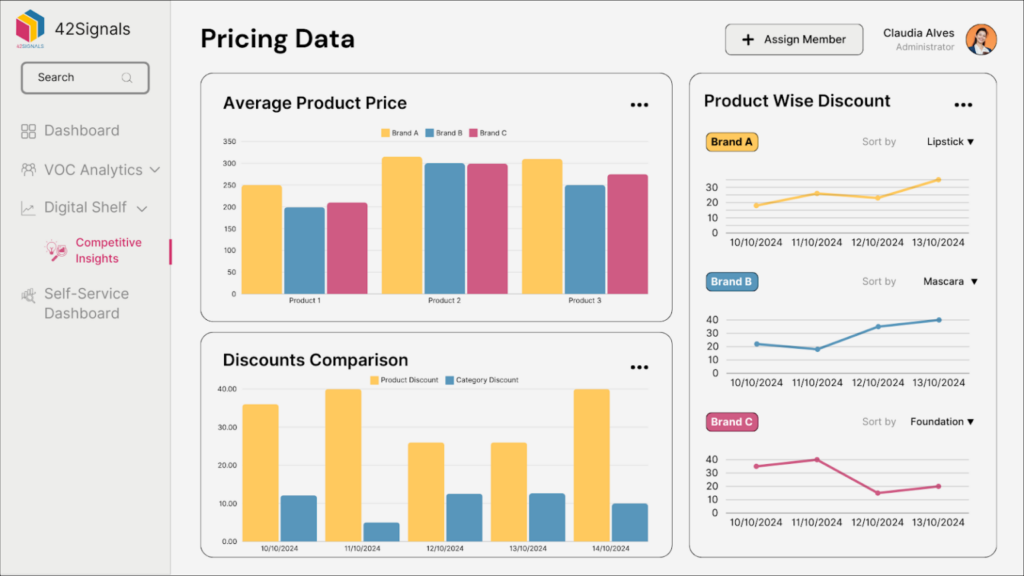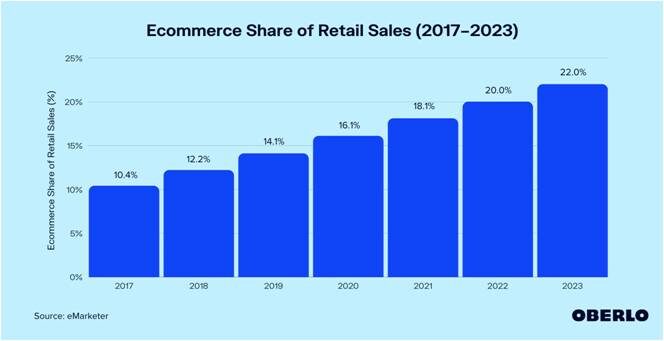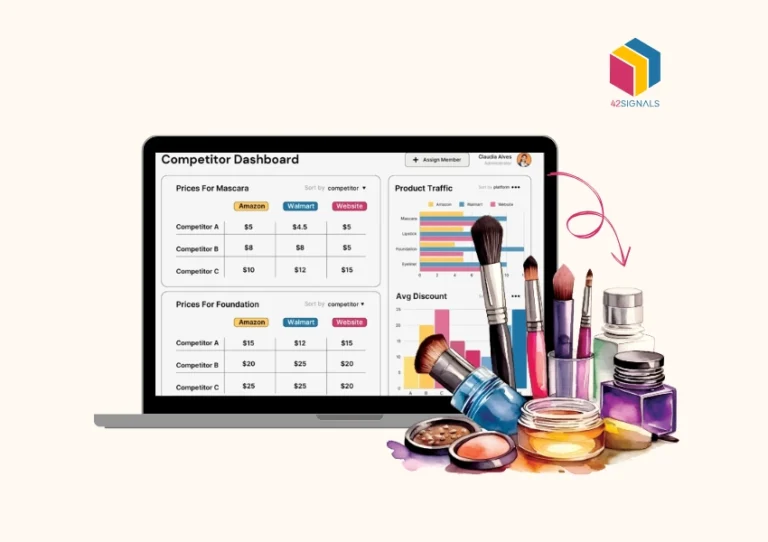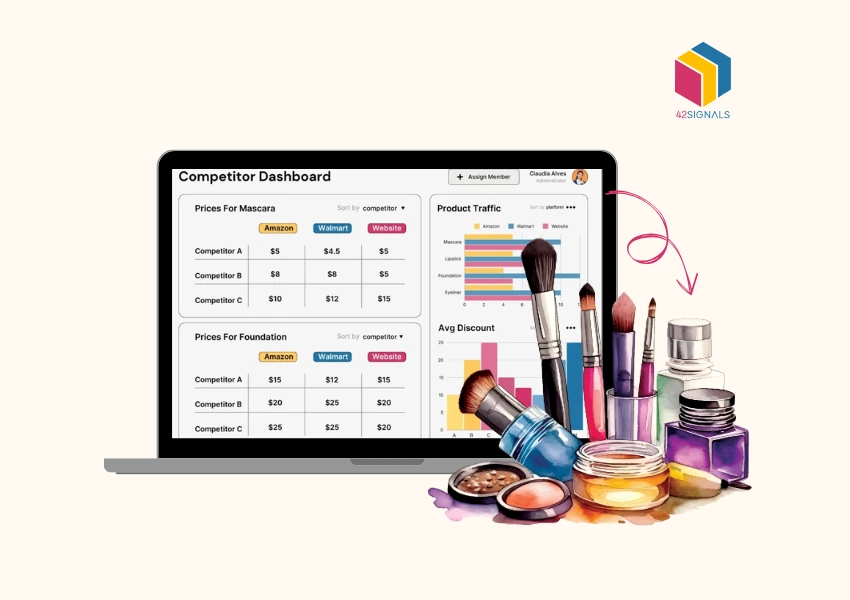The dawn of 2023 brings fresh opportunities for aspiring entrepreneurs eyeing the bustling world of e-commerce. If you’re considering taking the plunge into this digital marketplace, brace yourself for a journey filled with innovation and excitement. With online shopping continually evolving, keeping pace requires a combination of the right tools and strategies. Central to this mix, and perhaps the most important, is the concept of ‘e-commerce pricing intelligence’.

Understanding the Digital Marketplace with E-commerce Pricing Intelligence
As e-commerce gains complexity, the stakes for entrepreneurs have risen. The modern online shopper in 2023 expects more than just competitive prices. They seek seamless experiences, personalized recommendations, compelling product displays, and swift deliveries. In this fiercely competitive landscape, one factor consistently determines success: pricing.
Setting the right price in a market teeming with options is both an art and a science. This is where e-commerce pricing intelligence becomes invaluable. By leveraging advanced technology, data analytics, and strategic insights, pricing intelligence empowers businesses to stay ahead in the game, optimize profitability, and meet customer expectations.
What is E-commerce Pricing Intelligence?
E-commerce pricing intelligence refers to the systematic use of technology, data, and analytics to understand pricing trends, monitor competitors, and dynamically adjust prices in real-time. This process ensures businesses can offer competitive prices while maintaining healthy profit margins. In an era where manual price tracking is not only inefficient but also prone to inaccuracies, pricing intelligence emerges as a critical asset.
By harnessing pricing intelligence, businesses can:
- Gain a comprehensive understanding of market dynamics.
- Track and analyze competitor pricing strategies.
- Identify optimal price points to attract and retain customers.
- Enhance overall profitability through data-driven decision-making.
Why is E-commerce Pricing Intelligence Important?
The significance of e-commerce pricing intelligence in today’s marketplace cannot be overstated. Consider the following benefits:
1. Staying Competitive
In a crowded marketplace, where customers have endless choices, pricing is often the deciding factor. A well-informed pricing strategy helps businesses stay competitive without compromising their value proposition.
2. Maximizing Profit Margins
While competitive pricing is essential, profitability remains the ultimate goal. Pricing intelligence tools analyze market trends and customer behaviors to identify price points that maximize profits.
3. Real-time Adaptability
E-commerce is dynamic, with prices fluctuating based on demand, seasonality, and competitor actions. Pricing intelligence enables businesses to adapt swiftly, ensuring they remain relevant and competitive.
4. Building Customer Loyalty
Consistently offering fair and competitive prices fosters trust and loyalty among customers. Loyal customers are more likely to return, recommend your brand, and contribute to long-term success.

Steps to Incorporate E-commerce Pricing Intelligence in Your Business
1. Research and Choose the Right Tool
Numerous pricing intelligence tools are available, each with unique features. Popular options include 42Signals, Price2Spy, Prisync, and Competera. When selecting a tool, consider your business size, industry, and specific requirements.
2. Understand Your Competitors
Before leveraging any tool, identify your primary competitors. Knowing who you’re competing against allows you to focus your pricing intelligence efforts effectively.
3. Set Clear Objectives
Define your pricing objectives. Do you aim to be a market leader, a challenger, or a follower? Your chosen strategy will influence your pricing decisions. Market leaders set trends, challengers offer slightly lower prices, and followers match prevailing rates.
4. Monitor and Analyze Data
Once your pricing intelligence tool is set up, regularly monitor market trends, competitor price changes, and customer preferences. Use these insights to refine your pricing strategy.
5. Adjust Prices Dynamically
Based on the data you gather, make strategic price adjustments. This doesn’t mean constant changes but rather well-timed updates to align with market conditions and business goals.
6. Focus on Value
While competitive pricing is crucial, never lose sight of the importance of value. Customers are willing to pay a premium for superior quality, exceptional service, and a seamless shopping experience.
Avoiding Common Pitfalls
While e-commerce pricing intelligence is a powerful tool, missteps can undermine its effectiveness. Here are some common pitfalls to avoid:
1. Engaging in a Race to the Bottom
Constantly undercutting competitors can trigger a pricing war, leading to diminished profit margins and a devaluation of your brand. Focus on value-added strategies rather than solely competing on price.
2. Over-reliance on Automation
While pricing intelligence tools are invaluable, human judgment remains irreplaceable. Always interpret data within the context of your business goals and market understanding.
3. Neglecting the Customer Experience
Competitive pricing alone won’t guarantee success. Prioritize the overall customer experience, including user-friendly website navigation, personalized recommendations, and reliable customer support.
The Broader Impacts of E-commerce Pricing Intelligence
Implementing pricing intelligence extends beyond immediate financial gains. It influences your brand’s market position, customer perceptions, and long-term growth potential. Businesses that embrace this technology can:
- Establish themselves as market leaders.
- Build stronger connections with their customer base.
- Navigate market fluctuations with confidence.
- Drive innovation in their pricing strategies.
Practical Example: Leveraging Pricing Intelligence in Action
Imagine you own an e-commerce store specializing in fitness equipment. Using a pricing intelligence tool like Prisync, you monitor competitor prices for a popular product, such as a set of adjustable dumbbells. The tool reveals that a major competitor has recently reduced their price. With this information, you:
- Evaluate your cost structure to determine if a price reduction is feasible.
- Decide to offer a limited-time discount, bundled with free shipping, to maintain competitiveness.
- Communicate the offer to your customer base via targeted email campaigns and social media.
The result? Increased sales, improved customer satisfaction, and enhanced brand loyalty.
The Future of E-commerce Pricing Intelligence
As technology evolves, so does the potential of e-commerce pricing intelligence. Emerging trends include:
Personalized Pricing: Tailoring prices to individual customers based on their purchase history and behavior is becoming increasingly feasible.
AI and Machine Learning: Advanced algorithms are enabling even more precise price predictions and dynamic adjustments.
Integration with Big Data: Combining pricing intelligence with other data sources, such as customer reviews and social media sentiment, offers deeper insights.
Conclusion
The e-commerce landscape of 2023 demands a blend of technology, strategy, and human intuition. As you venture into this exciting realm, let e-commerce pricing intelligence be your guiding light, ensuring your prices are competitive, profitable, and in tune with market dynamics.
With the right approach and tools like 42Signals, your e-commerce venture can soar to new heights, setting you apart in this digital age.







